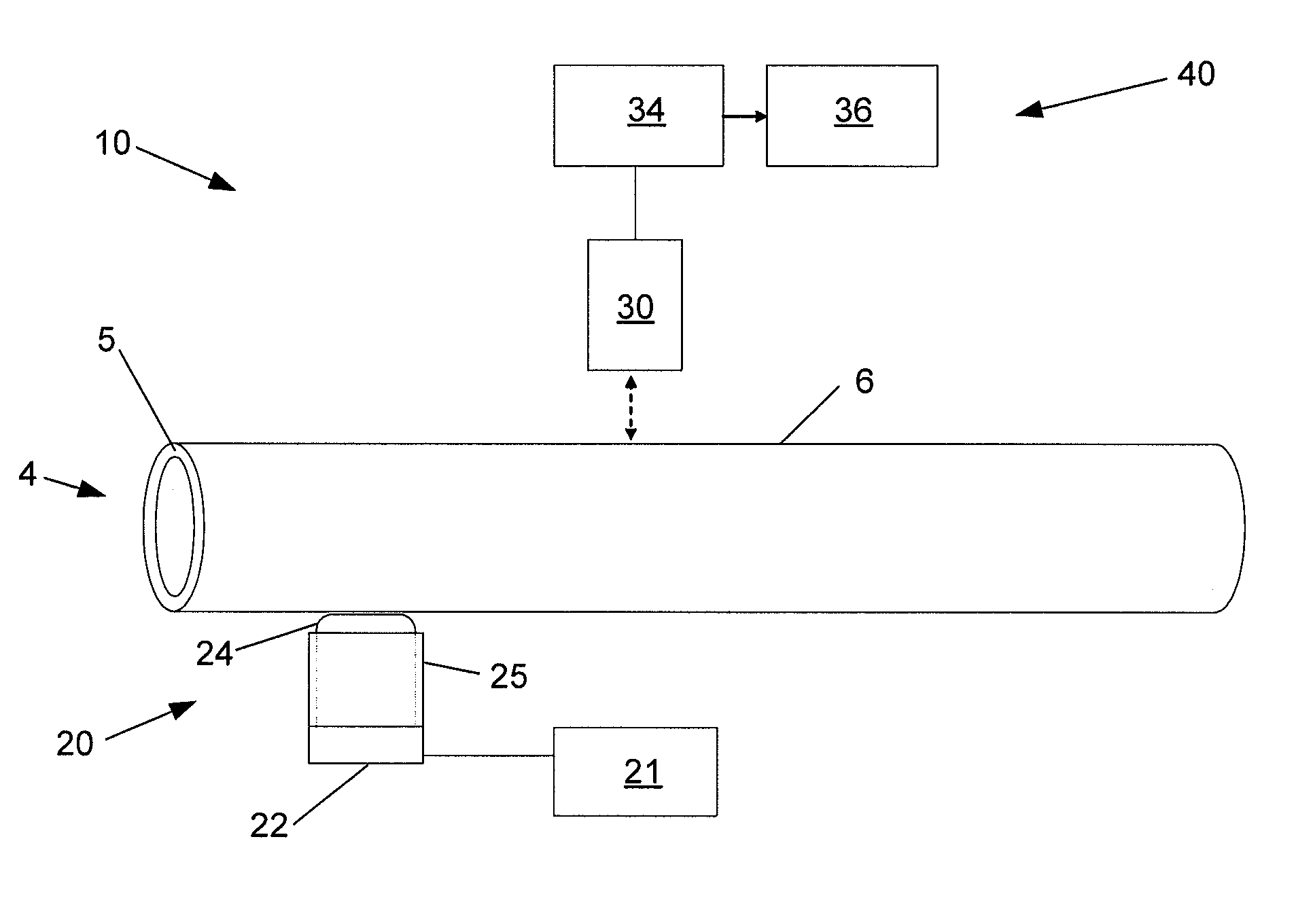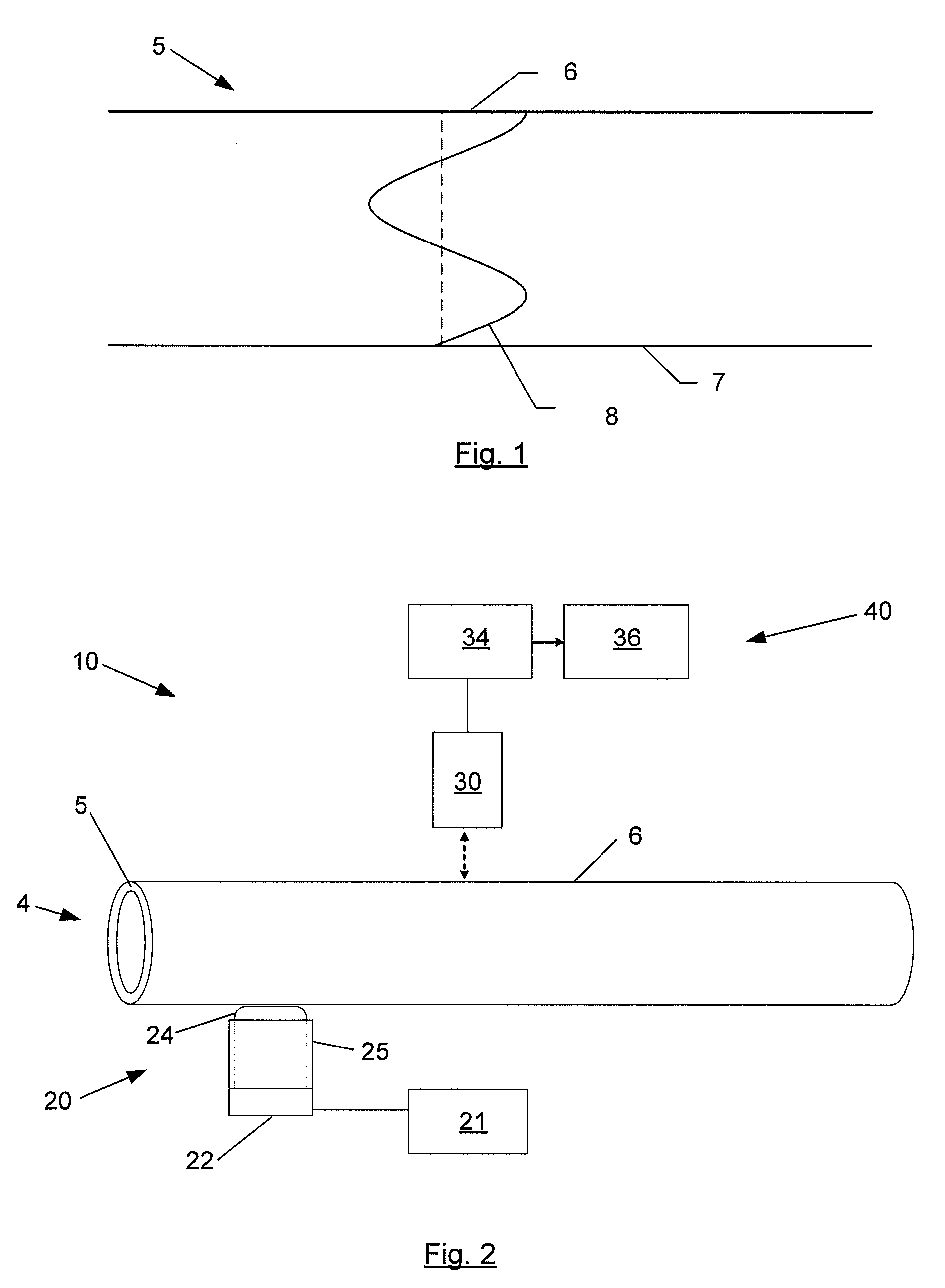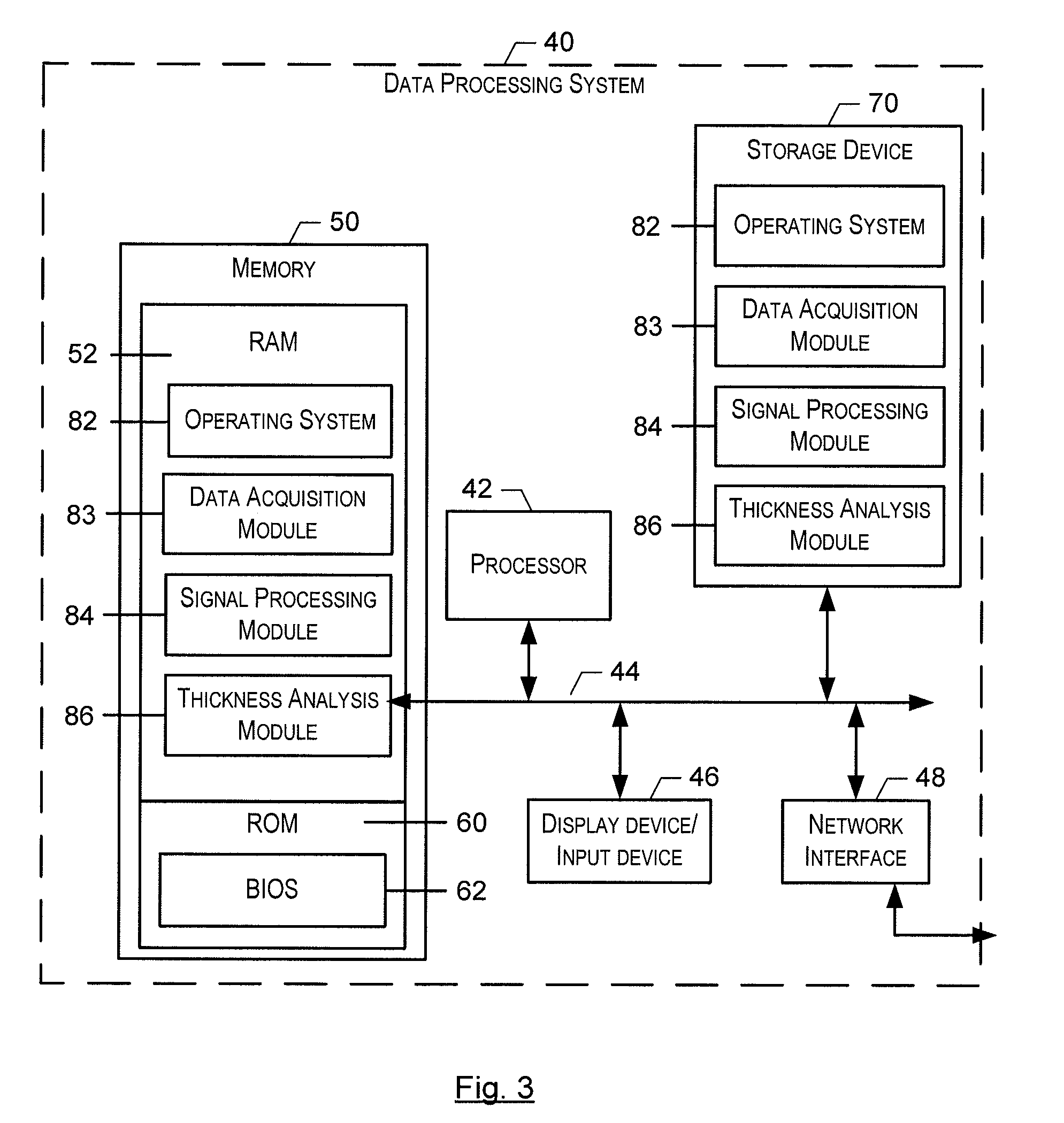Non-destructive thickness measurement systems and methods
a thickness measurement and non-destructive technology, applied in the direction of mechanical measuring arrangements, instruments, using mechanical means, etc., can solve the problems of inability to provide inability to monitor the uniformity of the high-temperature pipe, and inherent delay in providing feedback to the casting system
- Summary
- Abstract
- Description
- Claims
- Application Information
AI Technical Summary
Benefits of technology
Problems solved by technology
Method used
Image
Examples
example
[0057]The following non-limiting example illustrates various aspects of some embodiments of the present invention.
[0058]FIGS. 4-6 illustrate data collected during a test of an annealed 6 inch ductile iron pipe at ambient temperature using an embodiment of the present invention. The desired thickness for the 6 inch pipe is approximately 0.35 inches. A vibration was applied to the pipe using a first piezoelectric transducer operating through a couplant. The reaction of the pipe was monitored using a second piezoelectric transducer.
[0059]FIG. 4 illustrates the white noise signal generated by a signal generator21 in that trial. As can be seen, the white noise includes signal components of various frequencies with all of the frequencies having substantially the same power. As illustrated, the frequency range for this pipe was 0 to 2 MHz.
[0060]The white noise generated by the signal generator 21 was communicated to the first piezoelectric transducer, which applied a vibration into the pip...
PUM
 Login to View More
Login to View More Abstract
Description
Claims
Application Information
 Login to View More
Login to View More - R&D
- Intellectual Property
- Life Sciences
- Materials
- Tech Scout
- Unparalleled Data Quality
- Higher Quality Content
- 60% Fewer Hallucinations
Browse by: Latest US Patents, China's latest patents, Technical Efficacy Thesaurus, Application Domain, Technology Topic, Popular Technical Reports.
© 2025 PatSnap. All rights reserved.Legal|Privacy policy|Modern Slavery Act Transparency Statement|Sitemap|About US| Contact US: help@patsnap.com



